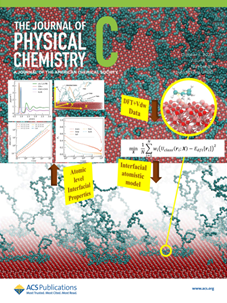Reasearch Projects for the support of Faculty Members and Researchers and the procurement of high-cost research equipment.
Download contentThe way that polymers penetrate into nanometer size pores is of fundamental interest and important for many applications. This is the case, for instance, that a biopolymer is experiencing when migrating through a narrow passage towards to its target with profound importance in cell biology. Similarly, nanopores in lab-on-a-chip devices selectively transport biomolecules for detection and separation applications. When a polymer melt gets into contact with the opening of a thin pore the capillary force is strong and drags the chains into the pore. Within POLYCONF we followed the dynamics of capillary flow of polymer melts into nanopores under conditions where the molecular dimensions (2Rg) approach the pore diameter (d). Despite recent work in understanding capillary rise in nanopores at the onset of POLYCONF - this field was still at its infancy. As model confining systems in 2d we chose self-ordered nanoporous aluminum oxide (AAO) because AAO templates contain arrays of discrete-isolated, parallel, cylindrical nanopores that are uniform in length and diameter.
Within POLYCONF we explored (i) the kinetics of polymer imbibition. In addition we investigated the (ii) dynamics under confinement by combining experiment, theory and simulation.
Scientifically this research proposal addressed the following questions:Within POLYCONF in order to address these issues we employed different but complementary techniques (dielectric spectroscopy as a function of temperature and pressure as well as in-situ measurements of the dielectric function, differential scanning calorimetry, reflection microscopy, optofluidics as well as several surface characterization techniques).
The research team had a broad experience in experiment, theory and simulation. Apart from the PI, 1 post-doc, 2 graduate students, 2 post-graduate students, several undergraduate students and four external collaborators with experience in polymer theory (Masao Doi, Beijing), self-consistent field theory (SCFT) calculations (Jiajia Zhou, Beijing), atomistic simulations (Vaggelis Harmandaris, Crete) and on surface properties (Hans-Juergen Butt, Mainz) were employed.
The main results from this work with reference to the scientific questions are as follows:
and with respect to the simulations:
As a result, 33 papers have been published in refereed journals, 12 of which exactly on the subject and 21 in related fields. The 12 publications most closely related to the project are shown below:
Invited talks at international conferences given by the PI (APS March Meeting 2021; Bordeaux Polymer Conference 2022; ACS Fall Meeting Chicago, 2022; 11th International Conference on Broadband Dielectric Spectroscopy and its Applications, San Sebastian 2022; 5th Int. Workshop on Dynamics in Confinement, Grenoble 2022; 9th International Discussion Meeting on Relaxations in Complex Systems, Chiba, Japan, August 2023) and several contributed talks by the POLYVONF collaborators.
Seminars were given by the PI at Universities and Research Centers (Osaka Metropolitan University, Dept. of Chemistry, August 2023; University of Crete, Dept. of Materials Science and Technology, March 2021; FORTH-IESL, December 2020; University of Massachusetts at Lowell, September 2020, University Wuppertal, GDCh Kolloqium, 2020).
Advertisement. Results from the current investigation published in Phys. Rev. Lett. 125, 127802, 2020 on “the way that Macromolecules penetrate narrow pores” was advertised on the webpage of the Max Planck Institute for Polymer Research, https://www.mpip-mainz.mpg.de/en/press/pr-2020-17 as well as in popular science periodicals in Germany, https://www.innovations-report.com/physics-and-astronomy/shall-they-go-with-the-flow/.
Cover pages. The research on (a) the simulation results of confined polymers, and (b) the flow of a confined semi-crystalline polymer made the respective cover pages of J. Phys. Chem B. and Science Advances as shown below:

